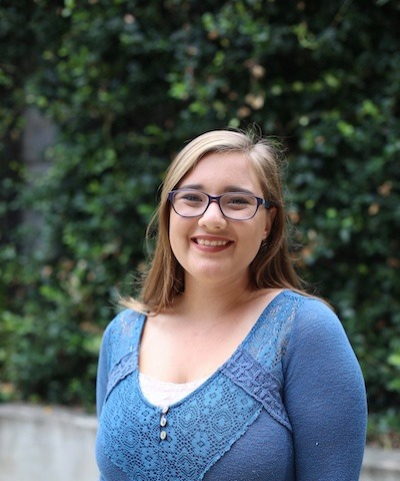‘California Nurses at War’: FSU History major Emma Davis talks about creating an online exhibition

Emma Davis, a rising senior, just put together her first solo digital exhibit. Entitled ‘War Girls: California’s Army Nurses in the First World War,’ it is the product of Emma’s internship with the National Cemetery Association (NCA). From September 2020 to April this year, Emma held a Virtual Student Federal Service (VSFS) internship that allowed her to take classes at FSU while interning with the NCA in Washington, D.C.
Back in December 2020, we spoke to Emma about the first months of her fellowship, how she decided what to work on, and what her research had yielded so far (What's it like to be a VSFS intern?). In this interview, Emma takes us backstage and talks about the process of creating the actual online exhibition.
“It was a lot more work than I had thought,” Emma explained. “It was hard to streamline the story for the exhibit and I encountered technical problems.” Initially, Emma had planned to showcase 10 nurses from California, about whom she had discovered a lot of material. “But then, when I began to tell their stories, it became too cluttered. It was overwhelming. So, I decided to focus on five instead.”
Emma used the experiences of a different nurse to illustrate each of the exhibition’s five sections: ‘A World at War,’ ‘Answering the Call,’ ‘Battlefield to Base Hospital,’ ‘The Girls “Over There,”’ and ‘After the Armistice.’ “I followed the archival material. The five nurses tell the story. I focused more on their lives.”
One of the challenges for Emma was to add maps to her exhibit. “I had planned on adding story maps to show where the women came from, trained, and where they worked in France. But I was unable to embed the maps in the software I used for the exhibition.” In the end, Emma settled on linking just one interactive map that shows the burial locations of the nurses to the exhibit.
Another challenge was the digital format itself. “I had more experience with actual ‘gallery’ exhibits and some of the objects I had wanted to use did not translate so well into the digital format.” Emma had thought that newspaper articles would play a much bigger role. “In a gallery exhibit, I would frame the news pages and let the visitor engage with them.” But in the virtual format, whole pages were too long to display, and clippings proved difficult to line up successfully. Emma relied more heavily on pictures.
A highlight of the project was when Emma reached out to the Berkeley Historical Society in a quest for material and discovered that the person who wrote back to her was a direct descendant of one of her featured nurses! “It was amazing to link a nurse from my project to someone who is alive today. And to have that descendant be involved with history.”
Looking back at the internship and project, Emma reflected that the first six weeks were the most difficult. “I was still trying to refine my project to see how much material I could access. All I had was Google and Ancestry.com, and I had to do ever more nuanced topic searches.” Emma was surprised by how much material she was able to find. “There were pictures to go with the names, and letters, and newspaper articles.” All in all, it took Emma around three months to write the exhibit text and put the website together.
Emma’s advice to other students: “Apply, if you are looking for an internship that will allow you to work anywhere in the world – virtually. But apply only if you can set and keep to a schedule, self-motivate, and self-direct. One big plus is the networking aspect. There is a LinkedIn and a Facebook group of VSFS participants. The network spans the globe, and it will be valuable to my future career.”
Explore Emma’s exhibition: War Girls: California’s Army Nurses in the First World War
* * *
Interested in applying for a VSFS internship? Here are some details.
How it works:
Each year, federal employees submit project requests between May 1 and June 10. U.S. students apply to their top three VSFS projects from July 1-31 on USAJOBS.gov. VSFS supervisors review applications between August 1-31 and may contact VSFS candidates for a virtual interview. As part of the interview, candidates may be asked to show examples of their expertise and work. All candidates will hear by early September if they have been offered a position.
For more information go to https://vsfs.state.gov/

